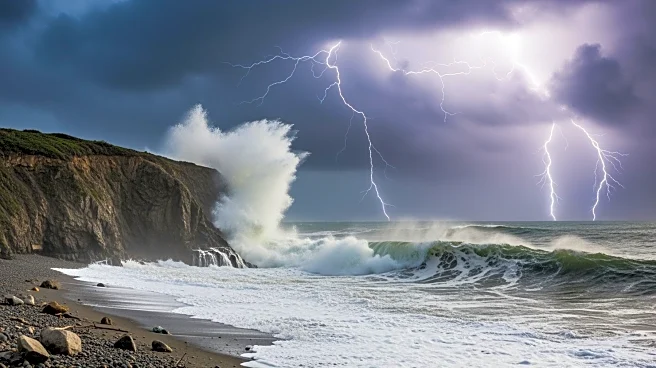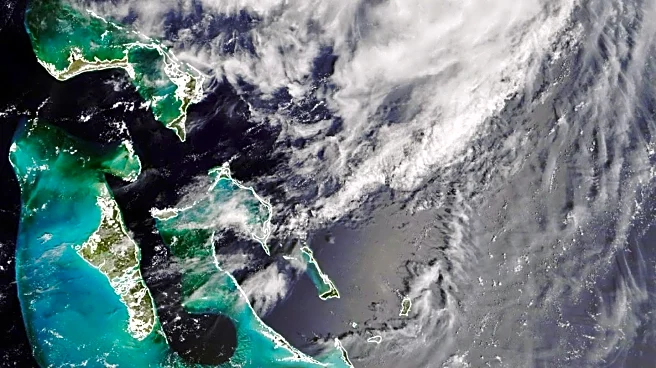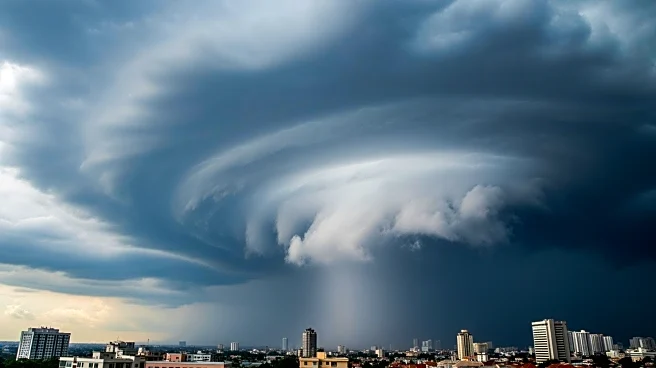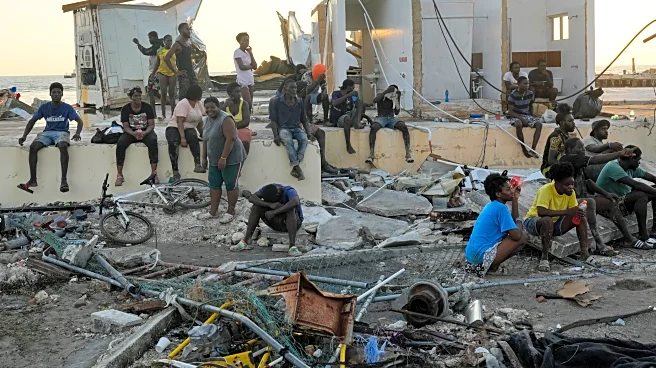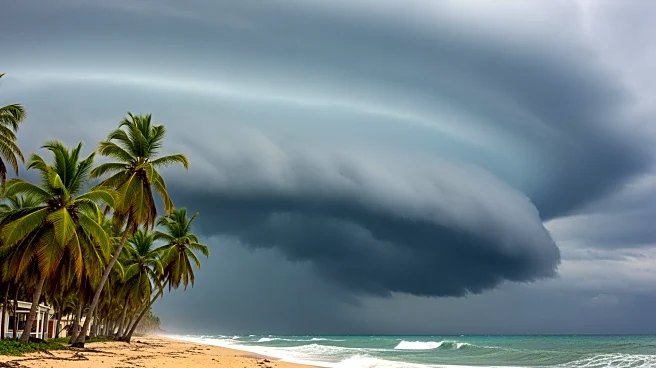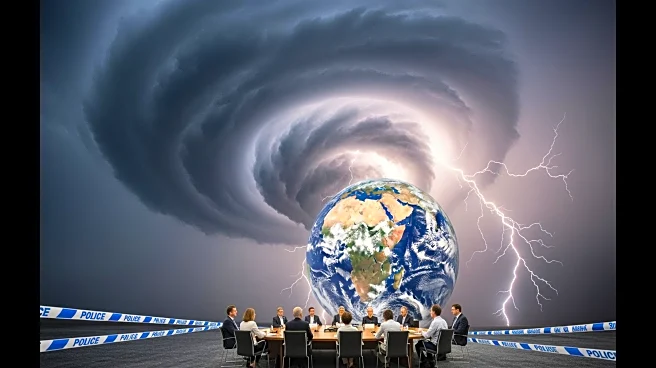What's Happening?
Hurricane Melissa, a Category 5 storm, has caused significant destruction across Jamaica. The hurricane made landfall on the island's southwest coast near Black River, leading to widespread flooding and damage
to homes, businesses, and community centers. Coastal communities, particularly in the parish of St. Elizabeth and Montego Bay, were severely affected, with some fishing villages nearly flattened. The storm also drenched rural farmlands in St. Elizabeth Parish, known as Jamaica's breadbasket, submerging low-lying areas and stripping vegetation from agricultural lands. Satellite images reveal extensive flooding and damage, including roofs ripped off buildings and boats washed ashore.
Why It's Important?
The impact of Hurricane Melissa on Jamaica highlights the vulnerability of island nations to extreme weather events. The destruction of homes and businesses, particularly in coastal areas, poses significant challenges for recovery and rebuilding efforts. The damage to agricultural lands in St. Elizabeth Parish threatens food security and the livelihoods of farmers, potentially leading to economic hardships. The storm's aftermath underscores the need for improved disaster preparedness and resilient infrastructure to mitigate the effects of future hurricanes.
What's Next?
As Jamaica begins recovery efforts, international aid and support may be necessary to assist in rebuilding infrastructure and providing relief to affected communities. The government will likely focus on restoring essential services and supporting displaced residents. Long-term strategies may include enhancing disaster preparedness and investing in resilient infrastructure to better withstand future storms. Monitoring the storm's progression as it moves towards Cuba and the Bahamas will be crucial for these regions to prepare and respond effectively.
Beyond the Headlines
The devastation caused by Hurricane Melissa may prompt discussions on climate change and its role in intensifying hurricanes. The increased frequency and severity of such storms could lead to policy changes aimed at reducing carbon emissions and investing in sustainable practices. Additionally, the cultural impact on communities that rely on coastal resources for their livelihoods may lead to shifts in economic activities and adaptation strategies.
